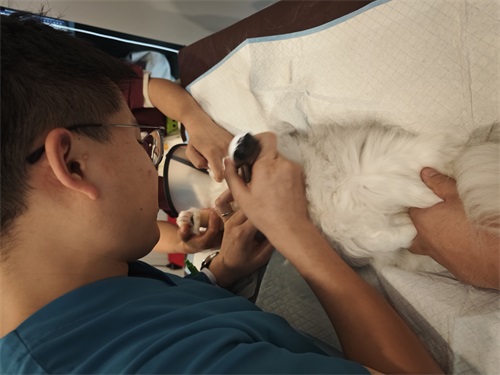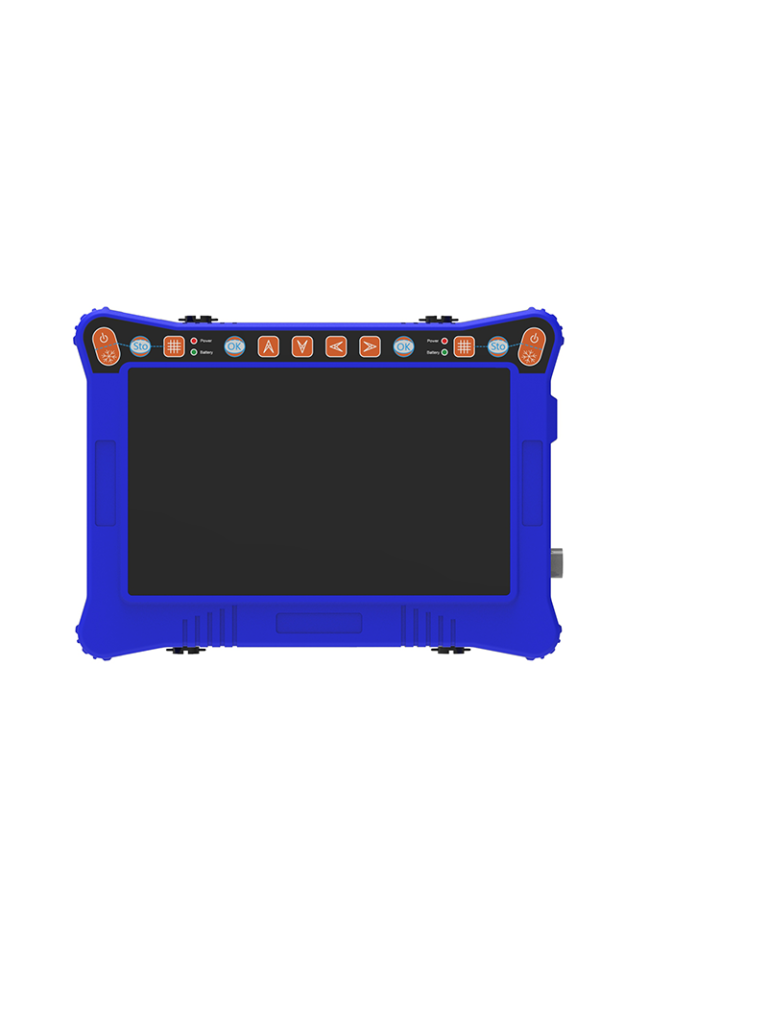Wireless Veterinary Ultrasound Machine: Enhancing Animal Care Through Mobility and Precision
As someone who’s spent plenty of time in veterinary clinics and out in the field, I always marvel at how technology—especially wireless ultrasound machines—has transformed how we diagnose and care for animals. It’s a world apart from the heavy, stationary machines of the past. These portable devices feel like a game‑changer, giving vets and animal caregivers flexibility without compromise on image quality.

Why the buzz around wireless devices?
Traditionally, ultrasound meant dragging around a bulky console, plugging it in, and juggling cables. It worked, sure, but it wasn’t exactly ideal for farm calls, equine work, or small‑animal wellness checks at remote locations. Now you slip a probe into your pocket (or carry it in a compact case), connect via Wi‑Fi or Bluetooth to your tablet or phone, and you’re all set. It’s fast, clean, and gives incredible freedom.
What vets overseas are saying
Veterinarians around the world—especially in countries with extensive livestock or large‑animal practices—keep talking about Boxianglai Wireless Scanners and the GE Vscan Air. Clarius has the BXL-DB20 and BXL-S300 models tailored to animals. They deliver high‑definition images, dual‑array probes, and long battery life—all completely cordless. The Vscan Air also gets praised for being waterproof, durable (meets military drop standards), and intuitive on both iOS and Android. Field vets say they love having real‑time imaging while staying mobile. Comments like “best for ease of use” and “preferred handheld for purchase” pop up often in international vet forums.
Putting performance into words
Okay, so performance really matters. Wireless ultrasonic systems have come a long way thanks to advances in beamforming, compression, and signal processing. One academic study discussed how compressed Fourier‑domain convolutional beamforming drastically reduces data size—making high‑resolution imaging feasible on a wireless device without giant probes or huge wires. In practice, this means vets can scan sheep, dogs, horses, even whales or elephants with surprisingly crisp images.
Common models vets choose
Let’s look at a handful of wireless machines that are popular:
| Model | Animal Types Supported | Key Features |
|---|---|---|
| Boxianglai BXL-DB20 | Small companion animals | Micro‑convex probe, HD imaging, full wireless |
| Boxianglai BXL-S300 | Whole body for many species | Dual‑array, extended battery, high resolution |
| GE Vscan Air™ | Multi‑species, pocket size | Waterproof, iOS/Android friendly, durable |
| Neo C83v Vet | Multi‑purpose veterinary | 9 presets, compact handheld system |
| Q7 Vet by Esaote | Large animals and barns | Ultra‑compact, ideal for barn/field scanning |
These models cover a broad range—from busy small‑animal clinics to livestock farms and equine work in the field.
Veterinarian reviews mention that Boxianglai scanners are especially user‑friendly—they emphasize touch controls, seamless setup, and clarity of image even on thick fur or wool. Butterfly iQ+ Vet also competes in the same handheld arena—it’s touted as the first whole‑body POCUS device that really handles big and small animals well.
Real‑life use cases from abroad
A small animal practice in the UK described scanning cats and dogs cage‑side—no hunching over a console, no dragging cables. They’re scanning for pregnancy, masses, or candidacy for biopsies. According to users in rural Australia, the GE Vscan Air’s waterproofing is key—working in dusty or muddy paddocks is a breeze without worrying about damage.
In US feedlots or dairy operations, Boxianglai handheld units allow quick assessment of pregnancy status in heifers, monitoring fetal health or timing calving—or evaluating muscle and fat deposition in feeder cows. That kind of point‑of‑care imaging speeds up decisions, especially when large herds are involved.

How they actually help improve diagnostics
-
Speed and flexibility
You don’t need to mobilize a cart or prep a room. Just pop open the probe’s app, immerse in gel, scan, and move on. That means more appointments, less waiting, more time doing actual exams. -
Non‑invasive and animal‑friendly
Most animals tolerate the wireless wand with minimal restraint, especially compared to portable X‑ray or blood draws. You can watch structures like organs, uterus, bladder, or tendon in real time while interacting with the animal. -
Quantitative measurements
These devices let vets measure dimensions—organ size, fetal size, muscle definition. Data helps with breeding decisions, weight management in sporting dogs, or monitoring disease. -
Remote access and telemedicine
Many vets abroad send scans to specialists remotely for second opinions. That’s excellent for exotic animal care, zoo work, or wildlife rescues. -
Cost efficiency
While high-end machines still cost a fair bit, the wireless ones often cost less than traditional cart-based units, and require less maintenance and infrastructure (no power cords, no heavy carts, no dedicated rooms). Clinics say it pays off fast.
Practical tips for adopting one
-
Make sure your tablet or phone meets minimum specs (iOS or Android, recent version).
-
Battery life matters—some models scan for up to three hours on a charge.
-
Probe frequency matters: small animals do fine with high-frequency linear arrays (~7.5–12 MHz), whereas livestock or equine work needs lower frequencies (~3.5–5 MHz) and wider penetration.
-
Training is key—some vets take short online courses or join peer demos before full adoption.
-
Accessories like ultrasound gel, protective sheath, and cleaning wipes make scanning cleaner and easier.
Challenges vets report
It’s not all sunshine. Sometimes wireless signal can drop if the environment is crowded with networks or interference. Battery life, though long, still limits full-day scanning sessions if you don’t recharge. Also, apps can get buggy or require updates. A few users mention occasional lag when saving or uploading images. And, of course, these tools don’t replace high‑end console machines for deep organ evaluation or surgical planning—but for most routine diagnostics, they’re more than enough.
How this aligns with foreign expectations
Veterinarians abroad really value tools that work reliably in varied settings—from clinic to pasture to stable. Wireless devices tick that box. Their emphasis on portability doesn’t sacrifice image quality. Many international vet communities praise these devices for making ultrasound accessible at the point of care—not locked away in imaging suites. They also mention that younger vets expect mobile tech as part of everyday practice.
Wrapping it all together
At the end of the day, wireless veterinary ultrasound machines offer a fresh level of mobility, ease of use, and diagnostic precision. It’s no longer just about having a probe and console—it’s about being agile, mobile, and tech‑savvy. Vets overseas report how these tools empower them to work smarter and faster—with real‑time imaging, accurate measurements, and deeper client communication.
From scanning a pregnant mare in a barn to evaluating a lump under a cat’s skin in a living room or checking fetal development in a goat on a hillside, these devices change how we engage with animals every day. They feel like natural extensions of the vet’s senses—a way to look inside without stress, messy cords, or limitations.





